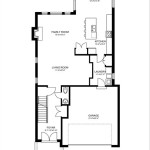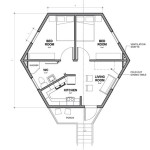Essential Aspects of Warm Dog House Plans
Providing your beloved canine companion with a warm, comfortable shelter during the colder months is essential for their well-being. Designing a suitable dog house requires careful planning and consideration of the various factors that contribute to keeping your dog cozy and protected from the elements.
1. Insulation and Ventilation:
Proper insulation is crucial to trap body heat and prevent heat loss, especially in freezing temperatures. Consider using materials like rigid foam insulation or straw bales for walls and ceilings. Ventilation is equally important to prevent moisture buildup and ensure adequate air circulation. Incorporate vents in the walls or roof to allow stale air to escape.
2. Door Design and Orientation:
The door should be large enough to allow your dog easy access but small enough to minimize heat loss. A flap or curtain over the opening can further prevent cold air from entering. Position the door to face away from prevailing winds and ensure it has a solid fit to prevent drafts.
3. Roofing and Weatherproofing:
Choose a roofing material that offers insulation and waterproofing capabilities, such as asphalt shingles or metal sheets. Proper slope and drainage are essential to prevent water pooling on the roof. Seal all joints and cracks around the edges to prevent leaks.
4. Materials and Construction:
Select durable and moisture-resistant materials for the exterior and interior of the house. Treated wood, vinyl siding, or composite materials can withstand harsh weather conditions and prevent rot. Ensure the structure is sturdy and well-built to withstand wind and other external forces.
5. Size and Elevation:
Determine the appropriate size of the house based on the size of your dog. A dog should be able to stand up, turn around, and lie down comfortably inside. Elevating the house slightly off the ground helps prevent moisture and cold from seeping in.
6. Bedding and Accessories:
Provide your dog with a soft, warm bed inside the house. Consider using materials like fleece or wool blankets and a raised platform to insulate them from the cold floor. Other accessories like a water bowl heater and a heated blanket can provide additional warmth during extreme temperatures.
7. Regular Maintenance and Cleaning:
Regular maintenance is essential to ensure the dog house remains in good condition. Inspect it periodically for any damage or moisture buildup. Clean the house thoroughly and replace bedding and blankets as needed to prevent mold and mildew.
Conclusion:
By incorporating these essential aspects into your warm dog house plans, you can create a comfortable and protective shelter for your furry friend during the winter months. Remember to consider the size, insulation, ventilation, materials, and other factors discussed to ensure your dog remains warm and cozy throughout the season.

Best 25 Insulated Dog Houses Ideas Only On House Diy Plans

Easy Diy Winter Doghouse Self Sufficient Projects

Cold Weather Dog House Plans Bradshomefurnishings Winter Diy Insulated

How To Build A Custom Insulated Dog House Ron Hazelton

14 Diy Dog Houses How To Build A House Plans Blueprints

How To Build A Diy Insulated Dog House Wilker Do S

Dog House Plans Here Is Kanna Waiting For Her New Too Bad This One Isnt Houses Insulated

Insulated Dog House Plans Myoutdoorplans

13 Diy Doghouse Plans And Ideas The House Of Wood

How To Build An Insulated Or Heated Doghouse 10 Steps








